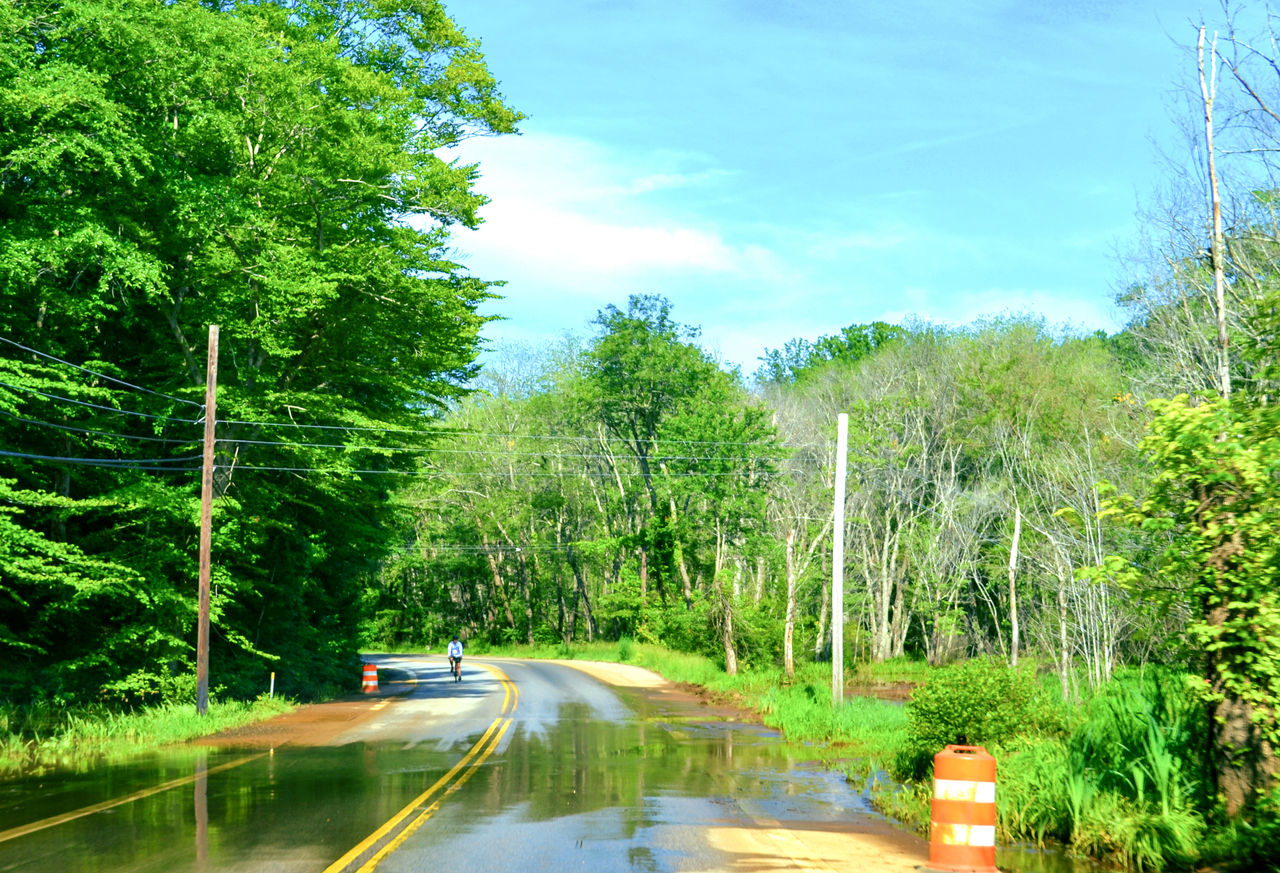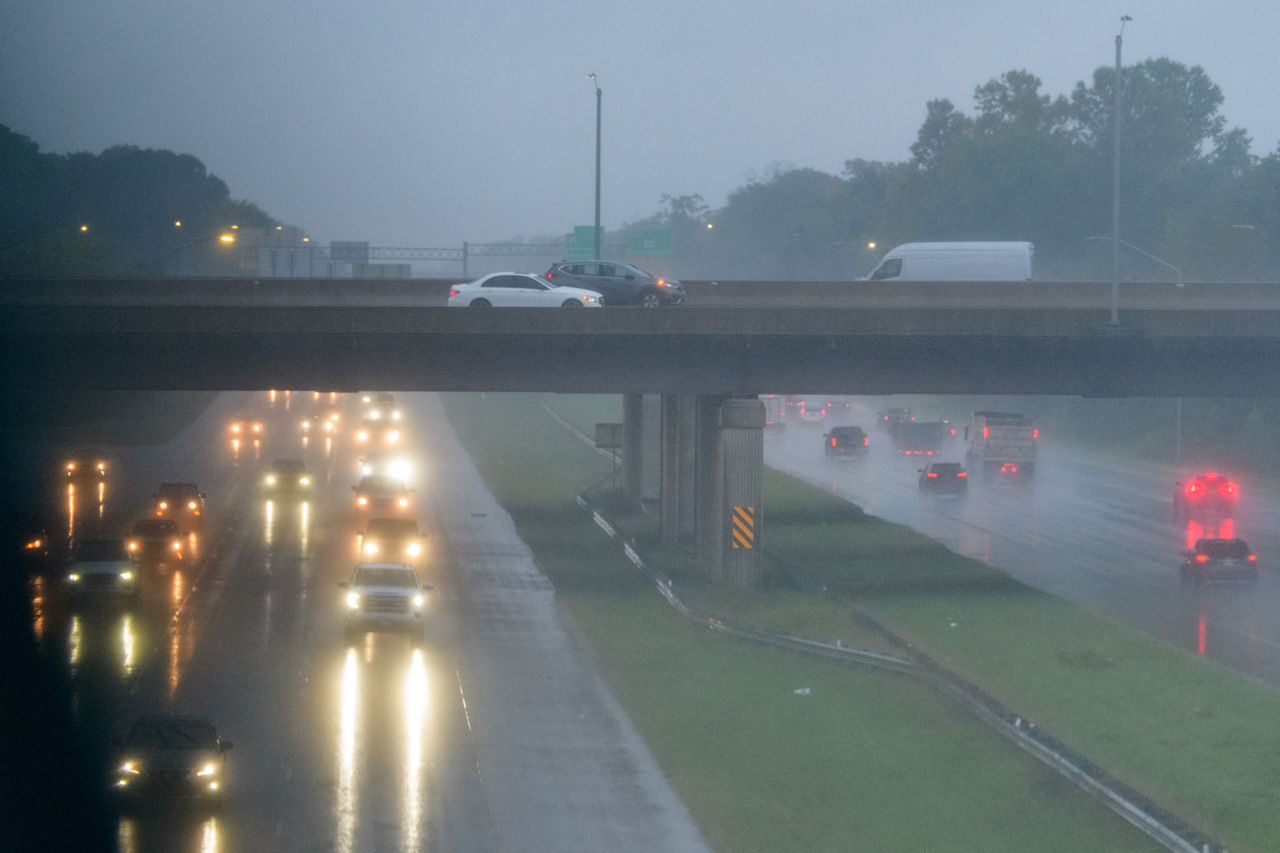
A high-water area in suburban Annapolis. (MDOT)
Flooding is the most common and costly natural disaster in the U.S., according to the Federal Emergency Management Agency. Every county in Maryland, including non-coastal counties, is at risk of flooding. Flooding can occur following precipitation events, during coastal storms, from sea level rise and changing tides and on sunny days with no precipitation.
To help address the significant risk of flooding on transportation infrastructure and operations, the Maryland Department of Transportation (MDOT) works to implement projects to reduce flooding. The State Highway Administration (SHA) developed a Climate Change Vulnerability Viewer that incorporates transportation infrastructure data and climate data to help analyze potential impacts of extreme weather. The tool allows transportation professionals to identify transportation infrastructure that is potentially vulnerable to flooding and find potential countermeasures. The Climate Change Vulnerability Viewer has been operational for over 6 years and has been adopted by partners across state agencies to better inform their flood resilience efforts, showcasing how MDOT is a leader in flood resilience.
Currently MDOT is working on flood mitigation projects at the Dundalk Marine Terminal and on St. George Island. These projects, funded in part with federal formula dollars from the Promoting Resilient Operations for Transformative, Efficient and Cost-saving Transportation (PROTECT) Program and prioritized on the state’s resilient project list, receive a reduced non-federal match allowing state transportation dollars to go further in protecting our infrastructure and operations.
At the Dundalk Marine Terminal, the Maryland Port Administration is implementing a three-part flood resiliency project to install tide gates, perimeter barrier and a new box culvert to help reduce flooding at the terminal, reduce the loss of cargo and keep cargo moving.
Flooding is a big concern for the residents and visitors of St. George Island in St. Mary’s County. To help reduce flooding and provide better access to the community in the future, SHA is implementing a flood resiliency project. To help reduce fooding in the community, the project will elevate part of MD-249, improve the drainage system and implement living and hybrid-living shorelines.

Morning commuters navigate rainy weather and wet roads last fall at Rt 100 over Rt 97 in Millersville, MD. (David Trozzo/MDOT)
SHA also provides services during flood and extreme whether events through the Coordinated Highway Action Response Team (CHART). CHART helps to close flooded roadways, support motorists, and provides up to date traffic information, including road closures.
Governor Moore declared April to be Flood Awareness Month and joins the Maryland Resiliency Partnership in educating those who live, work and play in the state about the dangers of flooding and how to be prepared. MDOT in partnership with the Maryland Department of Environment, Maryland Department of Natural Resources, Maryland Department of Emergency Management, Maryland Insurance Administration, United States Army Corps of Engineers and the Maryland Resiliency Partnership will provide important information to keep you and your loved ones safe any time a flood hits.
MDOT urges all users of the transportation network to stay safe during flood events. Turn Around, Don’t Drown, meaning never drive through standing water or on flooded roads as you never know how deep the flood waters are or what might be beneath the surface. Six inches of fast-moving water can knock over an adult, 12 inches of water will float most cars and 24 inches of water can wash away SUVs and trucks. This Flood Awareness Month look for resources to help learn more about your risk of flooding, make a plan and be prepared. Investing in preparedness can help keep you safe during flood events, reduce your risk and increase your resilience to weather events in Maryland.
Nicholas Kurtz is a Climate Resilience Analyst in the Office of Environment at the Maryland Department of Transportation.

